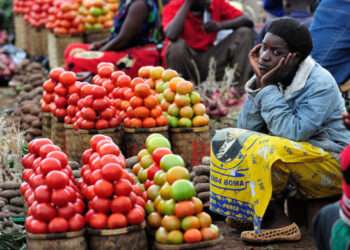Ghana’s Gross International Reserves (GIR) picked up in October after suffering a setback in the last month of the third quarter of the year, but still not strong enough to increase the import cover.
According to data from the Bank of Ghana, gross international reserves increased by US$88.6 million in October, the first month in the fourth and final quarter of the year (Q4). The country’s gross international reserves recorded a marginal improvement of 0.8 percent in October 2021 over the total value of US$10,694.4 million in September 2021.
At the end of October 2021, Gross International Reserves stood at US$10.8 billion (US$10,783.0 million), equivalent to 4.9 months of import cover. This compares with the reserve level of US$8.6 billion, representing 4.0 months of import cover at the end of December 2020.
Buffer for the local currency
The strong reserve position, according to the Bank of Ghana, provided some buffers for the local currency despite pressures in the third quarter due to strong foreign exchange demand from the corporate sector, importers, and offshore investors. This means the reserves supported a much slower depreciation pace compared with pre-pandemic levels.
“Cumulatively, while the Ghana Cedi depreciated by 2.6 percent and 1.1 percent against the US Dollar and Pound Sterling, respectively in the year to November 17, 2021, the Ghana Cedi appreciated by 5.6 percent against the Euro. In the same period of 2020, the Ghana Cedi recorded depreciations of 3.1 percent, 3.3 percent, and 8.3 percent against the US Dollar, the Pound Sterling, and the Euro, respectively”.
Bank of Ghana
In the outlook, the Monetary Policy Committee highlighted in its last meetings for 2021 that the strong reserve buffer level should provide some assurance to the market and help abate investor concerns, as the country’s external payment position remains strong.
GIR performance so far this year
Ghana’s gross international reserves have recorded an impressive run so far this year as compared to developments last year. Gross international reverses at the end of January 2021 stood at US$8,835.0 million which accounted for 4.1 months of import cover but rose steadily to end the first half of the year at US$11,026.9 million (5.0 months of import cover) in June 2021.
The country’s GIR continued its impressive run in the first two months of the second half of the year, rising to US$11442.5 million in August, the highest value so far recorded in 2021 and provided 5.2 months of import cover for the local currency as at that time.
The strong build-up of reserves in August was supported by the US$1 billion Special Drawing Rights (SDRs) that Ghana received from the IMF. It however, declined by US$748.1 million in September which saw the import cover also dwindling to 4.9 months.
The strong reserve build-up over the review period provided some buffer to the local currency which the BoG said has come under some demand pressures from commerce, manufacturing, and energy sectors as economic activity picked up in the third quarter.
Despite the rise in the import cover, it is still below the ideal value of 8 to 10 months which is essential for a stable currency. Nevertheless, it provides some stability to the local currency and a further build-up of reserves in the last two months of the year could provide additional support to the Ghana Cedi against precipitous depreciation heading into 2022.
International reserves comprise foreign currencies, other assets denominated in foreign currencies, gold reserves, SDRs and IMF reserve positions. These reserves may be used for direct financing of international payments imbalances, or for indirect regulation of the magnitude of such imbalances via intervention in foreign exchange markets in order to affect the exchange rate of the country’s currency.
READ ALSO: Reject The E- Levy And Other Nuisance Taxes, CPP Urges Ghanaians

















